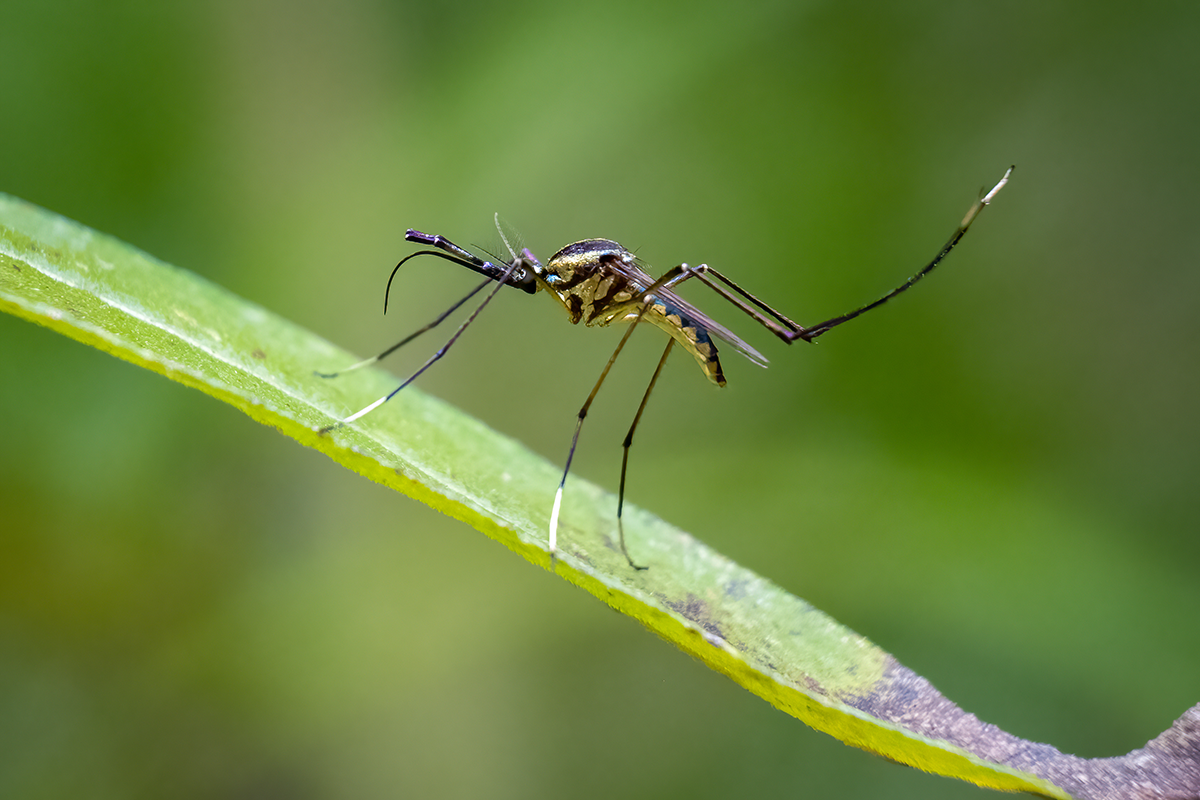
Mosquitoes are an often misunderstood group of insects. They belong to the Culicidae family and are part of the Insect order Diptera (two-winged) and sub-order Nematocera (slender-horned due to their fine, elongated antennae). These small creatures play a significant role in ecosystems around the world.
With over 3,500 species worldwide, mosquitoes are found on every continent except Antarctica. They thrive in a variety of natural environments including wetlands, forests or open landscapes, and several important species have adapted to urban environments. Mosquitoes are predominantly associated with water sources where their larvae and pupae develop.
Sometimes referred to as the most dangerous animals on the planet, mosquitoes are infamous for their role in transmitting diseases such as malaria, Yellow Fever, Dengue, and Zika. However, the majority of mosquitoes are not involved in disease transmission, and in fact, most do not bite humans at all. Instead, many prefer to feed on other animals or plant nectar.
Despite their notoriety, mosquitoes contribute positively to their ecosystems. Both male and female mosquitoes visit flowers to feed on nectar and are thought to aid in pollination. Fish, amphibians, crustaceans and other aquatic insects consume mosquito larvae and pupae, while adult mosquitoes fall prey to birds, bats, spiders, and predatory insects such as dragonflies.
 Notably, the larvae of one group of mosquitoes called Toxorhynchites, known as Elephant Mosquitoes due to their relatively larger size, are unique in having larvae that hunt other mosquito larvae. Interestingly, adult Toxorhynchites mosquitoes do not bite at all and are instead vegetarians, feeding only on plant sugars. These mosquitoes have sometimes been used in efforts to control other mosquitoes that transmit pathogens.
Notably, the larvae of one group of mosquitoes called Toxorhynchites, known as Elephant Mosquitoes due to their relatively larger size, are unique in having larvae that hunt other mosquito larvae. Interestingly, adult Toxorhynchites mosquitoes do not bite at all and are instead vegetarians, feeding only on plant sugars. These mosquitoes have sometimes been used in efforts to control other mosquitoes that transmit pathogens.
A fascinating aspect of mosquitoes’ behaviour is their mating ritual. As the male pursues the female in flight, they can hear each other’s wing beats, which produce the distinctive whining sounds we recognise when we hear a mosquito nearby. Individual mosquitoes produce slightly different sounds as they beat their wings, but if the pair are of the same species and a suitable match, they adjust their wingbeat frequency to harmonise, and only then will they go on to mate.
A Holistic Approach to Mosquito Management
Although mosquitoes are intriguing creatures, they also are often considered pests, most notably as vectors for numerous serious diseases that can cause significant morbidity and mortality in humans.
Integrated Vector Management (IVM) strategies combine a range of interventions to effectively control mosquito populations and reduce disease transmission. IVM emphasises the integration of multiple methods, such as biological control (using natural predators, parasites, or pathogens), environmental management (modifying habitats to make them less favourable for mosquitoes), and chemical control (using insecticides responsibly and selectively).
 Advances in technology have paved the way for innovative tools in vector control, offering new hope in the fight against diseases spread by mosquitoes. From genetically modified mosquitoes to precision-targeted insecticides, these novel technologies offer promising avenues for more targeted and efficient vector control. For instance, genetically modified mosquitoes are engineered to either reduce their ability to transmit diseases (known as vector competence) or to supress their population. An example of this is genetically modified mosquitoes which are designed to produce offspring that do not survive to adulthood, thus reducing the overall mosquito population. Additionally, emerging technologies like attractive targeted sugar baits (ATSB) and bait traps laced with parasite metabolites, provide alternative methods for controlling vector populations by disrupting their feeding behaviours. ATSB are sugar sources laced with toxins that attract mosquitoes and kill them when they feed. Similarly, bait traps that contain parasite metabolites disrupt mosquitoes’ feeding pattern, further helping control the impacted mosquito population.
Advances in technology have paved the way for innovative tools in vector control, offering new hope in the fight against diseases spread by mosquitoes. From genetically modified mosquitoes to precision-targeted insecticides, these novel technologies offer promising avenues for more targeted and efficient vector control. For instance, genetically modified mosquitoes are engineered to either reduce their ability to transmit diseases (known as vector competence) or to supress their population. An example of this is genetically modified mosquitoes which are designed to produce offspring that do not survive to adulthood, thus reducing the overall mosquito population. Additionally, emerging technologies like attractive targeted sugar baits (ATSB) and bait traps laced with parasite metabolites, provide alternative methods for controlling vector populations by disrupting their feeding behaviours. ATSB are sugar sources laced with toxins that attract mosquitoes and kill them when they feed. Similarly, bait traps that contain parasite metabolites disrupt mosquitoes’ feeding pattern, further helping control the impacted mosquito population.
NRI Research and Future Goals
Every year, there are nearly 700 million mosquito-borne infections in humans. These infections cause significant suffering and mortality and impact economic growth in affected areas. NRI is conducting crucial research on the ecology and behaviour of mosquitoes in Southeast Asia. This region is unique in that mosquitoes transmit malaria parasites from macaque monkeys to humans; the only place in the world where mosquitoes transmit malaria from other animals rather than just between humans. It is hoped the research will help determine mosquito vector behavioural and landscape ecology factors contributing to increasing transmission of non-human malaria to humans.
Related Research Articles
Published 29 January 2024
Published 16 May 2024
Published 07 October 2021

